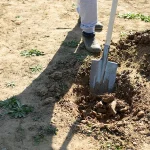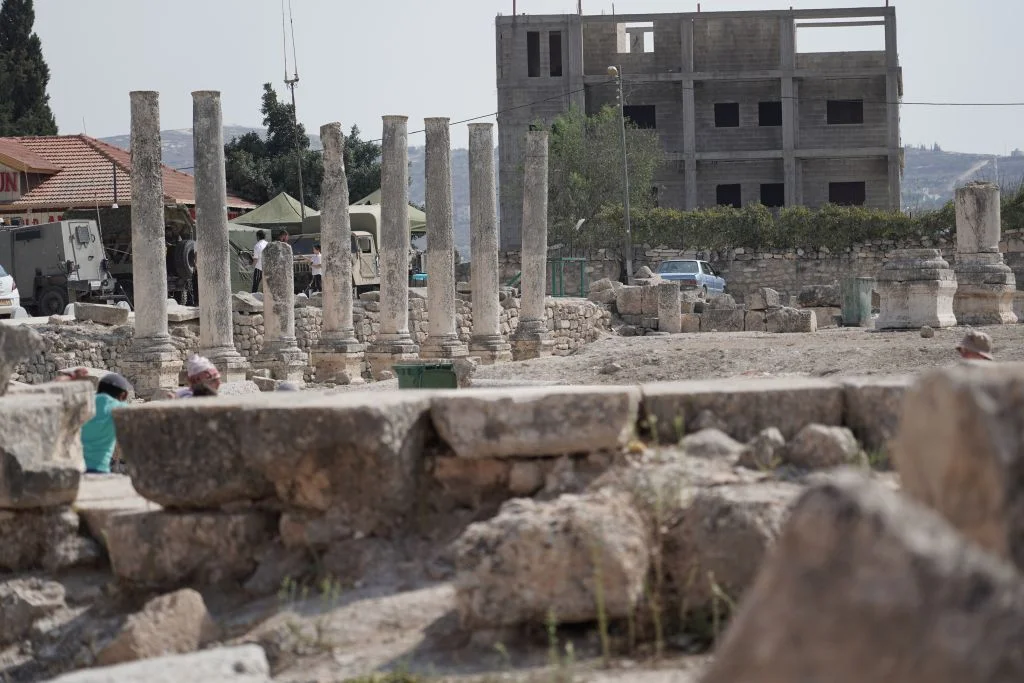Jerusalem, 22 October, 2025 (TPS-IL) — For the first time, archaeologists in Jerusalem have uncovered an Assyrian inscription dating to the First Temple period, offering rare evidence of official correspondence between the Assyrian Empire and the Kingdom of Judah. The tiny cuneiform sherd provides the first physical evidence of such correspondence, offering a rare glimpse into the political tension and possible disputes—such as delayed tribute or rebellion—that shaped their fraught relationship.
“I was sifting through the dirt and suddenly noticed a sherd with a strange decoration. Examining it closely, it looked to me to be cuneiform, but that seemed totally unreasonable. I screamed out of excitement,” said archaeologist Moriah Cohen. “For me personally, the thought that after 2,700 years I am the first person to actually touch this pottery with my hands is incredibly exciting. This is a once-in-a-lifetime find.”
The piece, measuring just 2.5 centimeters, was found next to the Western Wall. It bears inscriptions in Akkadian, the language of Assyria, and dates to roughly 2,700 years ago. It was discovered during a scientific excavation led by Dr. Ayala Zilberstein of the Israel Antiquities Authority, in collaboration with the City of David Foundation and with support from the Hebrew University of Jerusalem and Tel Aviv University.
“This is an extraordinary find,” Zilberstein said. “The inscription provides direct evidence of official correspondence between the Assyrian Empire and the Kingdom of Judah. The discovery strengthens our understanding of the depth of the Assyrian presence in Jerusalem, and the extent of its influence on and involvement in the conduct of the affairs of the Judean kingdom.”
Analysis indicates the fragment was likely part of a royal seal, or bulla, used to close an official letter from the Assyrian court. Assyriologists Dr. Peter Zilberg and Dr. Filip Vukosavović explained, “Bullae or sealings of this type bore an impression that was sometimes accompanied by a short inscription in Assyrian cuneiform script noting the dispatch’s contents or its destination. These differ in size and shape from the local Judahite impressions.”
The inscription appears to address a delay in the payment of tribute or another obligation to Assyria, specifying a due date corresponding to the first of the month of Av and referencing a high-ranking chariot officer responsible for delivering messages on behalf of the royal court. While the text does not mention the king of Judah directly, researchers suggest it was sent to the court of either Hezekiah, Manasseh, or early in Josiah’s reign, a period when Judah was a vassal state of Assyria.
“While we cannot determine whether this demand stemmed from a mere technical delay or a deliberate political move, the very existence of such an official appeal points to friction between Judah and the imperial government,” the researchers said. Some scholars are exploring the possibility that the inscription relates to the biblical account of King Hezekiah’s rebellion against Sennacherib, king of Assyria.
Petrographic analysis indicates the sherd was not produced locally but originated in one of the Assyrian administrative centers such as Nineveh, Ashur, or Nimrud.
“The bulla’s mineral composition generally corresponds to the geology of the Tigris Basin region. A chemical analysis is underway to precisely determine its provenance,” Dr. Anat Cohen-Weinberger of the Israel Antiquities Authority explained.
Israeli Minister of Heritage Rabbi Amichai Eliyahu hailed the find. “This rare discovery illustrates, once again, our deep roots in Jerusalem, which is the spiritual and national center of the Jewish people,” he said.
The inscription will be publicly unveiled in Jerusalem on Thursday.





























